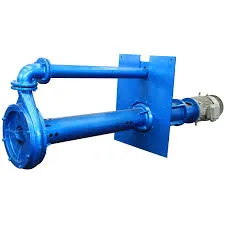Urdu
- Afrikaans
- Albanian
- Amharic
- Arabic
- Armenian
- Azerbaijani
- Basque
- Belarusian
- Bengali
- Bosnian
- Bulgarian
- Catalan
- Cebuano
- Corsican
- Croatian
- Czech
- Danish
- Dutch
- English
- Esperanto
- Estonian
- Finnish
- French
- Frisian
- Galician
- Georgian
- German
- Greek
- Gujarati
- Haitian Creole
- hausa
- hawaiian
- Hebrew
- Hindi
- Miao
- Hungarian
- Icelandic
- igbo
- Indonesian
- irish
- Italian
- Japanese
- Javanese
- Kannada
- kazakh
- Khmer
- Rwandese
- Korean
- Kurdish
- Kyrgyz
- Lao
- Latin
- Latvian
- Lithuanian
- Luxembourgish
- Macedonian
- Malgashi
- Malay
- Malayalam
- Maltese
- Maori
- Marathi
- Mongolian
- Myanmar
- Nepali
- Norwegian
- Norwegian
- Occitan
- Pashto
- Persian
- Polish
- Portuguese
- Punjabi
- Romanian
- Russian
- Samoan
- Scottish Gaelic
- Serbian
- Sesotho
- Shona
- Sindhi
- Sinhala
- Slovak
- Slovenian
- Somali
- Spanish
- Sundanese
- Swahili
- Swedish
- Tagalog
- Tajik
- Tamil
- Tatar
- Telugu
- Thai
- Turkish
- Turkmen
- Ukrainian
- Urdu
- Uighur
- Uzbek
- Vietnamese
- Welsh
- Bantu
- Yiddish
- Yoruba
- Zulu
Telephone: +86 13120555503
Email: frank@cypump.com
جولائی . 25, 2024 04:27 Back to list
Innovative Solutions for Efficient Sewer Injection Pump Operations in Wastewater Management Systems
Understanding Sewer Injection Pumps An Essential Component for Wastewater Management
Sewer injection pumps play a critical role in modern wastewater management systems, ensuring that sewage and other forms of wastewater are effectively transported for treatment. In many urban areas, efficient handling of wastewater is not only a matter of environmental concern but also a key component of public health. This article delves into the function, types, applications, and maintenance of sewer injection pumps.
What Are Sewer Injection Pumps?
Sewer injection pumps are specialized devices designed to move sewage from lower to higher elevations, allowing it to flow into a sewage treatment facility. Unlike standard sump pumps, which typically deal with groundwater or surface water, these pumps are explicitly built to handle the highly viscous and often abrasive nature of wastewater. This includes not just liquid waste but also solids and debris commonly found in sewage.
Types of Sewer Injection Pumps
There are several types of sewer injection pumps, each suited to specific applications
1. Submersible Pumps These pumps are designed to operate while submerged in the wastewater. They are often used in residential or small commercial settings and are known for their efficiency and compact design.
2. Dry Pit Pumps Unlike submersible pumps, dry pit pumps are installed in a separate pit above the sewage. They are easier to maintain as they can be serviced without removing them from the sewage. However, they require additional equipment for priming and may be more expensive to install.
3. Grinder Pumps These pumps are equipped with a cutting mechanism that shreds solids into finer particles. This feature is especially important in areas with a lot of waste material, as it allows for smoother pumping and reduces the risk of clogs in the system.
4. Progressive Cavity Pumps These pumps are effective for handling sludge and viscous fluids. They utilize a rotating helical screw to move the sewage, making them ideal for industrial applications where waste may be more complex.
Applications of Sewer Injection Pumps
Sewer injection pumps are utilized in various settings
sewer injection pump

- Residential areas In homes, these pumps can be part of a sump system where they flush wastewater to gravity flow sewers or treatment plants.
- Commercial buildings Larger facilities, such as hotels or shopping centers, often rely on these pumps to move wastewater efficiently
.- Wastewater treatment plants These pumps are crucial for transporting sewage through different stages of treatment.
- Industrial sectors Factories and industries that generate liquid waste rely on robust sewer injection pumps to handle their effluent safely and effectively.
Maintenance of Sewer Injection Pumps
Regular maintenance of sewer injection pumps is vital for their proper functioning and longevity. Some essential maintenance tips include
- Routine Inspections Checking the pumps regularly for leaks, unusual noises, or changes in performance can help identify issues before they escalate into major problems.
- Cleaning Periodically cleaning the impeller and other parts helps prevent blockages caused by debris and solids.
- Lubrication Ensuring that the moving parts are lubricated correctly can reduce wear and tear, enhancing the pump's lifespan.
- Professional Servicing For more complex issues, hiring a professional service technician is recommended to perform repairs and comprehensive inspections.
Conclusion
Sewer injection pumps are indispensable in managing wastewater, protecting public health, and ensuring the sustainability of urban environments. As populations grow and cities expand, the demand for effective wastewater management systems will only increase, making the role of these pumps more critical than ever. Understanding their function and maintaining them properly can contribute significantly to the efficiency of our sewer systems and the preservation of our environment.
-
Custom Drilling Mud and Slurry Pump Supplier - High Efficiency, Tailored Solutions
NewsJun.10,2025
-
Supply Vertical Submersible Sewage Pump High-Efficiency WQ/QW Pumps Supplier
NewsJun.10,2025
-
Premium Sewage Ejection System & Pumps Efficient Waste Removal
NewsJun.09,2025
-
Premium Wholesale Slurry Pump Impellers Durable & Efficient Slurry Handling
NewsJun.09,2025
-
Top Sewage Pump Companies Durable Industrial Solutions for Efficiency
NewsJun.09,2025
-
Heavy Duty Slurry Pumps - OEM High Performance & Bulk Wholesale
NewsJun.09,2025










